How (and Why) to Make a Hummingbird Perch
My mother loves hummingbirds, so for Mother’s Day, I added plants and a hummingbird perch to her garden that will create habitat for the bejeweled birds. While hummingbird feeders are an easy way to attract these fast flyers, they can cause issues if they aren’t maintained properly. Feeders need to be continuously cleaned for the health and safety of your winged visitors, and with such a huge variety of natural feeders (flowers!) I chose to create a permanent hummingbird habitat in my mother’s garden rather than burden her with the chore of maintaining a feeder.
Hummingbirds have a long, curved beak that reaches deep into tube shaped flowers. Within that beak is a forked tongue that laps up nectar residing deep within the flower. Hummingbirds beat their wings thousands of times per minute, so they need lots of nectar to keep their little bodies moving. Choosing flower varieties to plant for hummingbirds should be based on your geographic location, so do a quick internet search for hardy flowers that are tube- shaped and provide food for these busy birds in your area. If you can find native flowers, that’s even better!
For my mother’s house in the mid-Atlantic, I chose to plant several varieties of hyssop (Agastache spp.), coral honeysuckle (Lonicera sempervirens), bee balm (Monarda didyma), Indian pinks (Spigelia marilandica), catmint (Nepeta), and beardtongue (Penstemon ‘Rich Ruby’).
As you can imagine, all that eating and wing-beating is exhausting for hummingbirds, and they need a place to rest, preen, and warm themselves in the sun. Hummingbirds can’t even hop, so resting on the ground is not safe for them; they need a perch. An ideal perch is one that’s located high above the ground with a wide vantage point in dappled sun. It’s easy to create a hummingbird perch for your feathered friends to use in your garden. Here’s a step-by-step guide to build your own!
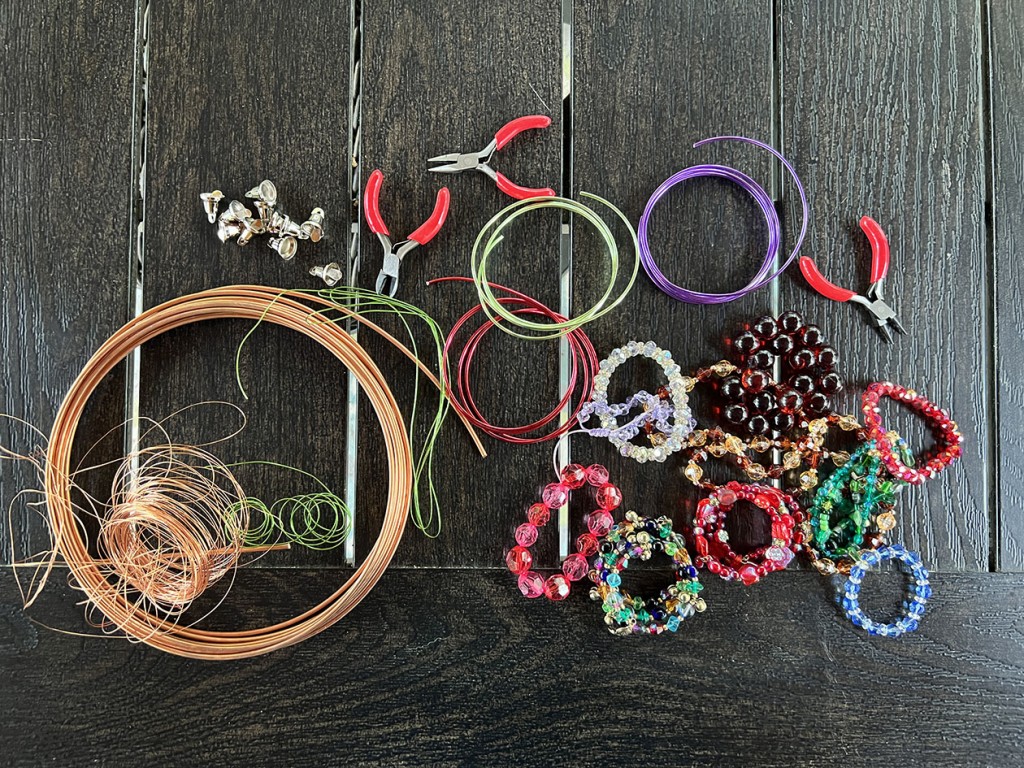
Supplies
- 18 gauge copper hobby wire
- Smaller wires in a variety of colors and thickness (craft stores carry these in the jewelry section)
- Wire cutters
- Pliers
- Beads (I bought a $1 bag of old jewelry from the thrift store rather than spend
inga lot on new beads!) - 5/16 inch wood dowel rod
Steps
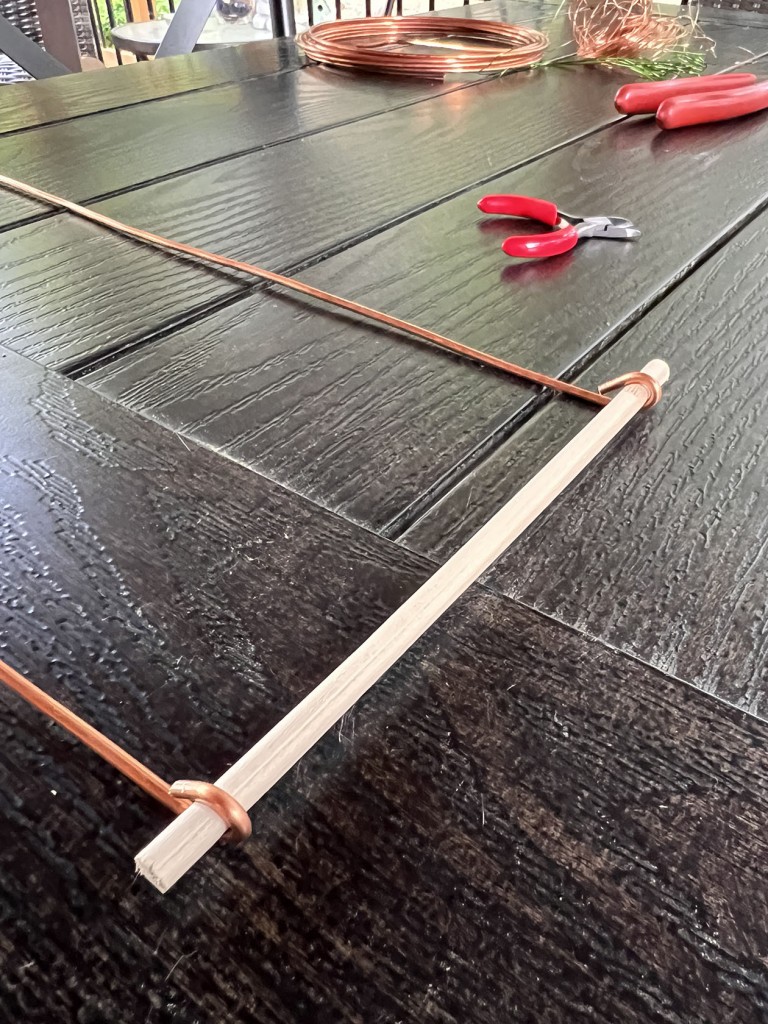
Start by cutting the dowel rod down so that it is about 7 inches long. You can use a natural twig or any other straight item instead of a dowel, but make sure whatever you use is small enough for tiny hummingbird talons and has a rough surface to provide a place to grip.
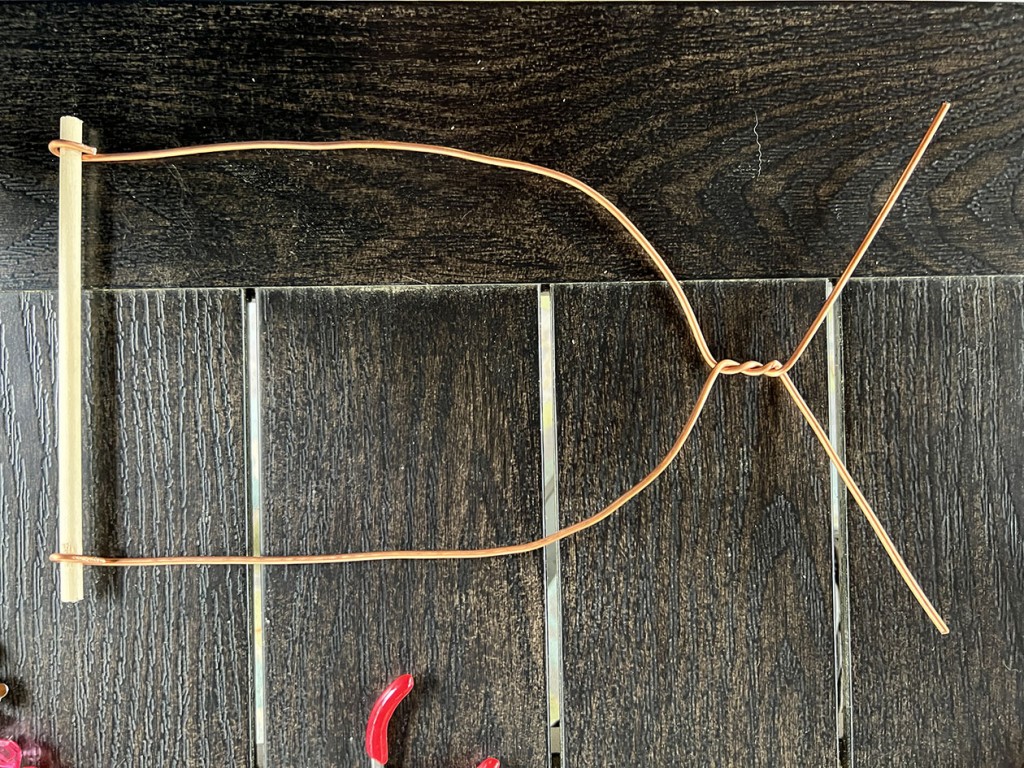
Cut two pieces of the copper hobby wire, each about 20 inches long. Using pliers, attach the wires to either end of the dowel rod by curving them around. Make sure the wire is tight enough that the dowel rod won’t slip out.
Bend the copper wire into an arch and, using the pliers, twist the tops together. Leave several inches of extra wire at the top.
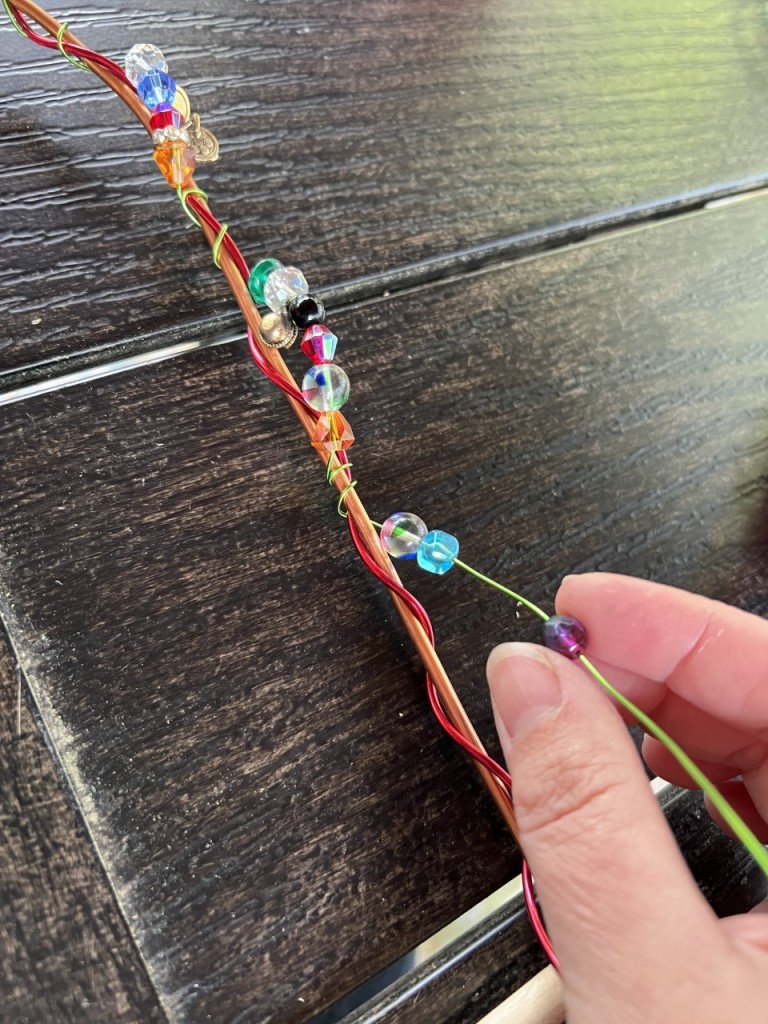
Use the smaller gauge, colorful wire to twist around the copper to add color and interest. Thread the beads through these wires as you twist them around the frame. The colors and shine will attract hummingbirds to the perch. You can add as much or as little ‘bling’ as you want, depending on your preference.
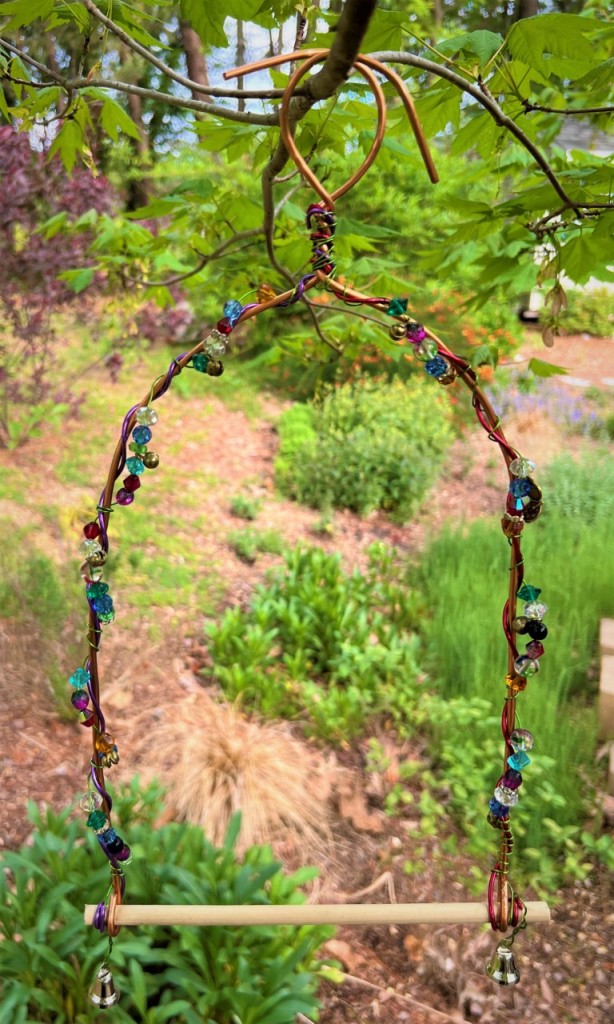
Find a suitable place in your hummingbird garden to hang your perch! Twist together the spare length of copper wire at the top, being careful not to make it too tight: you don’t want to damage the tree branch and you want the perch to swing.
Wait for the hummingbirds to visit!

